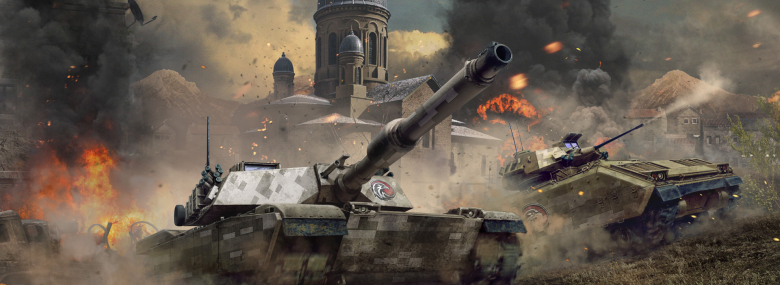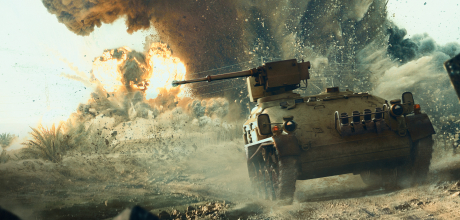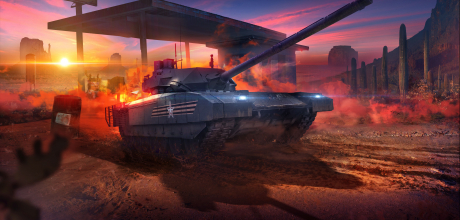
Commanders!
Updates 0.19 and 0.20 introduced a large number of changes to shell mechanisms as a part of the global Balance 2.0 overhaul – these changes (along with the reasons for their introduction) are listed in a dedicated article on Balance 2.0 mechanics.

Over the last weeks, we have evaluated the results of the abovementioned changes and have identified several issues with the Balance 2.0 system. These include:
- In some cases, the shell damage is difficult to predict due to the complexity of the damage bonus system and its interaction with damage-enhancing and damage-reducing elements such as the Spall Liner for example
- In some cases, the penetration or non-penetration of shells is unpredictable as even vehicles with very thin armor can under certain circumstances withstand high-caliber fire that should be reasonably expected to penetrate and cause damage
- Low-tier HEAT shells are sometimes exceedingly powerful while high-tier HEAT shells are less useful than we’d like them to be with kinetic shells being superior in most situations
- The penetration indicator is in some cases unreliable – shells can sometimes bounce off armor that is marked as green for example
Some of these issues go directly against our vision for the shell type roles, which is (generally speaking) as follows:
Armor-piercing shells should be the most reliable of all types and able to deal predictable, if not the highest, amount of damage while keeping high penetration values, high muzzle velocity and high accuracy. They should be the best shells against heavily armored targets and for sniping.
HEAT shells and missiles should be the best shells against light vehicles with thin armor as well as against thinly-armored parts of heavy vehicles (such as Main Battle Tank rear), especially at close distances where accuracy is not that important, dealing massive damage to such targets, causing more module/crew damage and having a higher chance to set enemies on fire. However, their downside is their low muzzle velocity, lower accuracy and the fact their effectiveness is reduced by composite armor.
High-Explosive shells and missiles are mostly useful in the following main cases:
- When it’s impossible to penetrate the enemy armor and the player wants to do at least some damage, for example to finish off an enemy with very few hitpoints left but with thick armor
- For destroying tracks and immobilizing the enemy
- For destroying enemy vehicle modules
- For reliably preventing the enemy from capturing a base (even small damage rests the capture counter)
- For firing against targets that have almost no armor at all (typically four-wheeled AFVs)
HESH/HEP/PISH/Thermobaric shells and missiles are extremely effective against sloped armor and also have their own set of weakspots – in other words, due to their distinctive mechanics, the weak (“green”) armor zones of these shells are different than those of kinetic/HEAT shells. These shells and missiles also deal maximum damage to modules. Their downside is that they are rather rare and only appear on several vehicles, providing unique gameplay.
Upcoming Shell Changes
To improve the shell situation and to bring it closer to the abovementioned intent, we will be introducing several changes in Update 0.21.
Armor-piercing shells will lose the damage bonus but will gain shell normalization (post-impact artificial improvement of the impact angle by several degrees in favor of the player). In other words, if the normalization is (as an example) 3 degrees, the shell impacts under 72 degrees angle and the ricochet angle is 70 degrees, the shell will not ricochet because the 3 degrees are deducted from the 72 degrees impact angle, resulting in 69 degrees impact angle and no ricochet. This particular change may appear after Update 0.21, but it is in development.
Additionally, shells will gain the Overmatch ability – very thin armor will be penetrated by large caliber shells even when the shell impacts under very sharp angle. Armor materiel will play a role - aluminum and composite armor will be much easier to overmatch than steel. The exact values are still under development.
This will result in more consistent AP damage output – players will no longer have to avoid firing at the back of a tank (currently, firing at thin armor actually makes them lose the AP damage bonus versus thick armor).
What is equally as important, light vehicles will no longer randomly ricochet shells due to difficult-to-track sharp angle impacts. This will increase the gameplay quality by removing the frustration of random ricochets.
HEAT shells and missiles will be completely rebalanced. They will receive the same base damage as AP shells of the same caliber but, unlike AP shells, their damage will progressively increase with the remaining shell penetration. This difference is calculated by deducting the penetrated armor thickness from the shell’s penetration roll.
- For 80% or more penetration remaining, the shell will receive 30% bonus damage (40% for HEAT-MP and other HEAT shells with fragmentation effect)
- For only a small amount of penetration remaining, the shell will receive 10% bonus damage
- Between these two values, the bonus scales linearly
The armor value for the purpose of the calculation is based on its nominal value and all layers add to each other (eg. 30mm of main armor + 5mm of spaced armor counts as 35mm for the purpose of this calculation).
As an example: If a HEAT shell with 800mm penetration value penetrates armor and has 700mm of penetration left (87.5%), it will obtain a 30% damage bonus (40% for HEAT-MP) while the same shell with 20mm left would have 10% bonus.
Additionally, fuse failed results (ricochets) will only appear at 80 degrees impact angle or higher (previously was 75 degrees). For the most modern HEAT shells and missiles (such as the MMP on CRAB and SPHINX, Spike-LR on Rosomak M1M or T-15’s missiles), it’s possible that this threshold will be even moved to 85 degrees.
These changes will remove the situations where HEAT shells actually do less damage in some situations than AP shells. HEAT shells and missiles will always do higher damage than AP shells of the same tier and caliber, but it will generally be harder for them to penetrate. In other words, HEAT shells will trade reliability for higher damage.
High-Explosive shells and missiles will receive a bigger bonus to module damage as well as a bigger bonus to damage when penetrating to make them more useful against both modules (for example, against tracks in order to immobilize a target) and thin-armored vehicles. When it comes to external module destruction, HE shells should be the weapon of choice.
To that end:
- Module damage bonus will be increased from 35% to 50%
- Penetration damage bonus will be increased from 40% to 50%
- We’ve changed the damage reduction equation for the armor values between the minimum threshold (usually 5mm) and maximum threshold (100mm) to significantly increase damage taken against very light armor (light AFVs, MBT rears etc.)
- We’ve changed the damage reduction equation for spaced armor as well, spaced armor will no longer “eat” all HE shell damage, reducing it to 0
- We’ve also increased the minimum damage the shell does from 5% to 10%
Apart from the abovementioned effects, these changes significantly improve the minimum damage the HE shells do. This also applies to autocannon HE shells that will be able to do at least some damage against MBT side-armor.
The HESH/HEP/PISH/Thermobaric shells and missiles will receive some minor tweaks as well, but overall they are working as intended. Fuse failed angle (ricochet) will be changed to 80 degrees or 85 degrees for the most modern shells such as the PISH rounds. Several specific shells (such as the Chieftain ones) will receive a buff.
Further Changes
We have several other plans that we will try to make appear in Update 0.21, although it is possible that they will appear at a later date. These future changes include:
- Spall Liner Vehicle Upgrade overhaul – Spall Liner module mechanism will be changed from the reduction of incoming damage to an increase in vehicle hitpoints, making the damage done to the target more comprehensible by removing a damage reduction modifier that is hidden to the player who fires the shot
- Spall Liner Retrofit overhaul – retrofit spall liners will be changed into a “survivability kit”, providing players with damage reduction to internal module/crew damage (by 15% or 30% but the actual amount might be changed based on testing)
- Reinforced Wheels Retrofit will be changed to provide damage reduction to incoming suspension damage in addition to the existing hitpoint boost
- Players will receive four shell slots instead of the current three
- The “oneshot-prevention” mechanism (preventing players from being killed with the first shot) will be disabled as it is now obsolete – in Balance 2.0, due to the new hitpoint and Tier scaling, being destroyed with a single shot is practically impossible
We hope that you will enjoy these changes and will see you on the battlefield!








